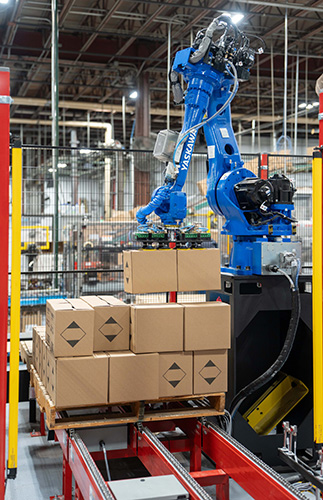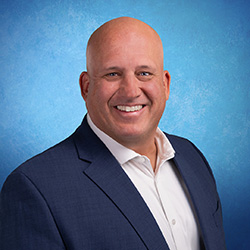PLZ connects legacy systems with smart automation, driving efficiency, safety, and innovation across all of its facilities.
By Brett Finley, CEO, PLZ Corp
Modernizing a manufacturing setup that’s been built over decades doesn’t happen overnight—and it shouldn’t.
At PLZ Corp, our factories have long produced trusted products in personal care, cleaning, food service, automotive and industrial sectors. And in recent years, we have invested much in technology, driven by an active response to our customers and a thirst for innovation.
But rather than rushing into full-scale automation, we’ve taken a smart, measured approach: first simplify how things are done, then bring in digital tools where they truly add value. This helps us keep quality high, processes safe, and disruptions low.
This mindset now guides us through a broader digital transformation, as we bring together different systems from companies we’ve acquired over the years, creating a connected, efficient network. But one thing is clear: the goal of these digital tools is to help our people, not replace them.
In a space where consistency, compliance, and proven results matter, we didn’t jump on every new tech trend. We focused on building capabilities that last.
Before any automation happened, we simplified key processes. Why? Because automating a messy system doesn’t fix the mess—it just makes the mess move faster. So we started with time and motion studies at some of our busiest plants to find where things slowed down or where quality could slip. Then we streamlined those operations.
Two of our long-standing Missouri plants, which have produced cleaning and food items for years, became test sites. We showed that improvements could make jobs easier without changing the things that worked. That built trust with the teams who knew these operations inside and out.

Safety isn’t just a box we check—it’s the lens through which every decision is made. One of our biggest moves was introducing a platform called Velocity, which tracks safety issues and trends in real time across all sites.
But it’s more than just data. It’s about making sure every new tool comes with appropriate training, clear safeguards, and enhanced visibility for both operators and managers. At those same Missouri plants, digitizing processes helped improve safety—thanks to better ergonomic design, quicker responses to issues, and more consistent reporting.
We also created a centralized EHS database, a system that will give us better visibility into our safety and environmental performance, helping us spot risks, stay compliant, and continuously improve. We keep track of the winning behaviors as well as the shortfalls, and schedule monthly training on specific issues. Then we tie the completion of those training sessions to our operational bonus plan.
One of our big wins was formalizing our safety incident investigation program. This program focuses on identifying risks, digging into root causes, and taking actions to prevent future injuries. We’ve made it easy for employees to report incidents through an online system. But it’s not just about reporting — it’s about taking action. We track corrective actions at each site to keep improving our safety program.
Once our core processes were stable, we focused on tools that could tie everything together across our 12 North American facilities. Built through multiple acquisitions over several decades, the systems at these factories were often operating independently. It was inefficient, complex, and lacked the power of redundancy that keeps our supply capabilities robust.
Instead of trying to replace older systems outright, we found ways to connect and improve them. For example:
These tools give our teams better insights without disrupting day-to-day work. And we didn’t roll everything out at once. We started small, tested at key plants, gathered feedback, and improved as we went.
Collectively, these initiatives highlight PLZ’s commitment to significantly enhance its competitiveness and value proposition in the CPG industry and demonstrate how PLZ is leveraging innovative and transformative strategies to navigate the complexities of the modern manufacturing landscape.
We’re not aiming for a flashy, one-time overhaul. Our goal is a more autonomous, agile network by 2028, without losing the human skills that keep it running today.
To get there, we’re layering new systems on top of the ones that already work—adding functionality instead of tearing things down. Platforms like Ignition, Velocity, SAP, and QMS all play their part in a connected ecosystem that balances innovation with stability.
Already, we’ve seen the fruits of that investment in improved customer service response time, marked improvements in safety and quality, and the continued growth of our brands. We look forward to innovations and efficiencies gained through new technology, which will allow for continued growth across PLZ for the years to come.
Modernizing manufacturing doesn’t mean starting over. At PLZ, we’re proving that a step-by-step approach—simplify first, automate second—can lead to lasting growth, development and innovation. It’s about keeping what works, improving what doesn’t, and putting people and safety at the center of it all.

About the Author:
Brett Finley is the Chief Executive Officer at PLZ Corp, a North American leader in specialty aerosol and liquid product manufacturing. Finley brings more than 25 years of specialty manufacturing industry leadership to the role. As a global business leader with expertise in complex engineered products and services, Brett drives growth through aftermarket, acquisitions, international expansion, new platform development, and product innovation.
In this episode, I sat down with Beejan Giga, Director | Partner and Caleb Emerson, Senior Results Manager at Carpedia International. We discussed the insights behind their recent Industry Today article, “Thinking Three Moves Ahead” and together we explored how manufacturers can plan more strategically, align with their suppliers, and build the operational discipline needed to support intentional, sustainable growth. It was a conversation packed with practical perspectives on navigating a fast-changing industry landscape.